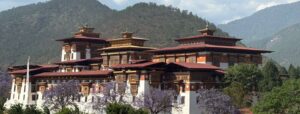Explanation of the importance of festivals in Nepal
Festivals in Nepal hold immense significance as they celebrate the country’s cultural and religious diversity. Nepal is home to numerous festivals that reflect the country’s deep-rooted cultural heritage and traditions. Festivals are not just a source of entertainment but also a way of bringing people together and spreading joy and harmony.
A brief overview of the major festivals in Nepal
Nepal is famous for its diverse range of festivals celebrated throughout the year. Some of the major festivals in Nepal include:
- Dashain, Tihar
- Maghe Sankranti
- Holi
- Lhosar
- Bisket Jatra
- Chhath.
Each festival has its unique significance and cultural practices.
This article will focus on the festivals in Nepal and cover the significance and cultural practices of some of the major festivals such as Dashain, Tihar, and Maghe Sankranti.
Dashain Festival
Explanation of the Dashain Festival
Dashain is one of the most important festivals in Nepal and is celebrated for 15 days. The festival symbolizes the victory of good over evil and marks the return of the goddess Durga to her maternal home. The festival is celebrated with great zeal and enthusiasm throughout Nepal.

Significance and importance of Dashain
Dashain holds immense significance for Nepalese people. It is a time when families and friends come together to celebrate and enjoy traditional food and cultural activities. It is also a time when people seek blessings from elders and deities and renew their relationships.
Explanation of when Dashain is celebrated in Nepal
Dashain falls in the month of Ashwin (September-October) and is celebrated for 15 days. The exact date of the festival is determined by the lunar calendar, and it usually starts in late September or early October.
Cultural and traditional practices during Dashain
During Dashain, people clean their houses and decorate them with flowers and lights. They wear new clothes and exchange gifts with their loved ones. The festival is also marked by the worship of the goddess Durga and the sacrifice of animals, such as goats and buffaloes.
Also Read: TRAVELLING IN NEPAL
Tihar Festival
Explanation of Tihar Festival
Tihar, also known as the festival of lights, is another major festival in Nepal that lasts for five days. It is celebrated to worship the goddess of wealth, Laxmi, and to honor different animals such as cows, dogs, and crows.
Importance of the Tihar Festival
Tihar is a time to celebrate and honor the bond between humans and animals. It is believed that animals have a significant role in our lives, and they should be respected and loved. Tihar is also a time to offer thanks and seek blessings for prosperity and happiness.
Explanation of Kukur Tihar and Bhai Tika
On the second day of Tihar, Kukur Tihar is celebrated to honor dogs. Dogs are considered to be the guardians of the home, and people offer them garlands, tika, and delicious food. The last day of Tihar is Bhai Tika when sisters offer tika and garlands to their brothers for their well-being.

Traditional practices in Tihar
During Tihar, various traditional practices and customs are followed throughout Nepal. Some of the common practices during Tihar are:
Lighting Diyas and Candles: Houses are decorated with beautiful Diyas and candles to welcome Laxmi, the goddess of wealth and prosperity.
Making Rangolis: Colorful Rangolis made of rice flour, sand, or flowers are made in front of the main entrance of the house to welcome guests and Goddess Laxmi.
Offering Garlands and Tika: On the third day of Tihar, sisters put a Tika made of vermillion, yogurt, and rice on their brother’s forehead and offer a garland made of Marigold flowers. Brothers also offer Tika gifts to their sisters.
Kukur Tihar: On the second day of Tihar, dogs are worshipped and offered food as they are believed to be the messengers of Yama, the god of death.
Lighting Candles and Oil Lamps: On the night of Laxmi Puja, oil lamps and candles are lit in every household to celebrate the festival of light and prosperity.
Playing Deusi and Bhailo: Groups of boys and girls go around the neighborhood singing traditional Deusi and Bhailo songs and collecting money and sweets.
Gambling: On the night of Laxmi Puja, it is believed that Goddess Laxmi visits homes that are well-lit and happy. Therefore, people play cards and gamble to stay awake and create a lively atmosphere.
These are some of the traditional practices and customs followed during Tihar in Nepal. Each ritual and tradition is deeply rooted in Nepalese culture and has its own significance and meaning.
Maghe Sankranti
Explanation of Maghe Sankranti
Maghe Sankranti is a festival celebrated by Nepalese people during the month of Magh, which falls in mid-January. It is a Hindu festival that marks the beginning of the auspicious month of Magh. The festival is also known as Makar Sankranti in other parts of India and is celebrated with great enthusiasm.
Importance of Maghe Sankranti
Maghe Sankranti is an important festival in Nepal as it marks the beginning of a new agricultural cycle. It is a time for farmers to take a break from their work and celebrate the harvest season. The festival is also a time for families to come together and enjoy traditional foods and cultural activities.
Traditional practices and customs during Maghe Sankranti
On Maghe Sankranti, Nepalese people take a holy dip in rivers and water sources, especially at the confluence of rivers. This ritual is believed to cleanse the body and soul of sins and bring good luck for the coming year. People also fly kites on this day, which is a popular activity for both children and adults. Traditional foods such as sweet potatoes, sesame seed sweets, and ghee are also consumed on this day.
Other Festivals in Nepal
Explanation of other festivals in Nepal
In addition to Dashain, Tihar, and Maghe Sankranti, Nepal has many other festivals that are celebrated throughout the year. These festivals are a reflection of Nepal’s diverse culture and religion. Some of the major festivals celebrated in Nepal are:
- Holi
- Bisket Jatra
- Buddha Jayanti
- Gai Jatra
- Teej
- Janai Purnima
- Indra Jatra
- Chhath
- Maha Shivaratri
- Lhosar
Significance and cultural practices during each festival
Each of these festivals has its own significance and cultural practices. Holi is a festival of colors, where people throw colored powder at each other. Bisket Jatra is a New Year festival celebrated by the people of Bhaktapur, which involves pulling a chariot and throwing stones at each other. Buddha Jayanti is a celebration of the birth, enlightenment, and death of Lord Buddha. Gai Jatra is a festival that honors the deceased and is celebrated with a procession of cows. Teej is a women’s festival that celebrates the bond between husband and wife. Janai Purnima is a festival that celebrates the sacred thread worn by Hindu men. Indra Jatra is a festival that honors the god Indra and is celebrated with music, dance, and street performances. Chhath is a festival that celebrates the sun god and is marked by fasting and worshiping the sun. Maha Shivaratri is a festival that honors Lord Shiva and is marked by fasting and visiting temples. Lhosar is a New Year festival celebrated by the people of the Himalayan region of Nepal, which involves traditional dances and customs.
Conclusion
In conclusion, festivals play a significant role in Nepalese culture and tradition. Festivals bring people together, create a sense of community, and provide a platform to celebrate their culture and heritage.
Dashain, Tihar, and Maghe Sankranti are the three major festivals celebrated throughout Nepal. Each festival has its own significance and cultural practices that reflect the unique traditions and customs of the Nepalese people.
Apart from these major festivals, Nepal has numerous other festivals that are celebrated with equal enthusiasm and vigor. Some of the major festivals in Nepal include Bisket Jatra, Teej, Holi, and Shiva Ratri.
To experience the vibrant and colorful culture of Nepal, attending Nepalese festivals is a must. These festivals provide a unique opportunity to witness the cultural diversity and hospitality of the Nepalese people.
In conclusion, Nepal is a country that celebrates its culture and heritage through a wide variety of festivals. These festivals not only reflect the religious and cultural traditions of Nepal but also showcase the warmth and hospitality of its people.
Let our expert team at Asian Heritage Treks and Travel take care of everything — from guided tours to personalized packing tips and travel arrangements.
Plan My Nepal Trip






